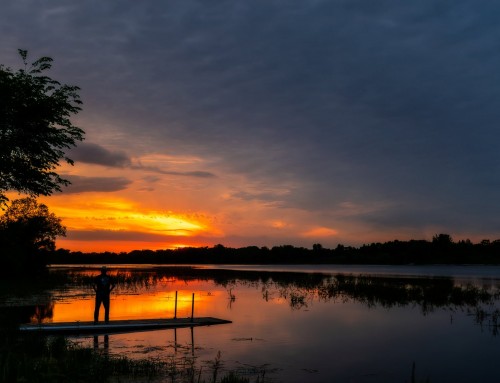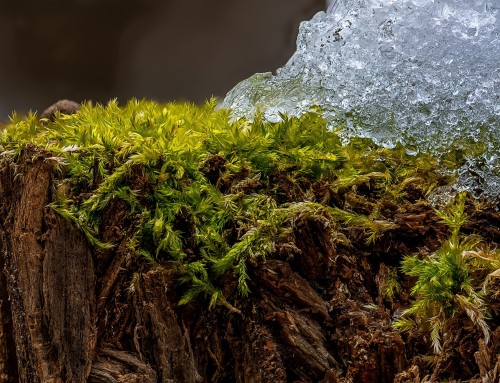In an earlier article I talked about music as one of the three things tha caused former Indian Creek Nature Center director Rich Patterson to say “”I like yours because they are outstanding and very much set a mood.”
The second thing I think that helps my films stand out and set a mood is color.
Mama Don’t Take My Kodachrome Away
I love looking at other filmmakers work. One thing I’ve noticed with a lot of them is that they use a very neutral look to their films. Contrast is not too harsh or too soft, colors aren’t too bright or too muted. Everything is right down the middle. Not too much, not too little.
I got my start capturing nature and wildlife shooting black and white film on an old Brownie camera. When I moved to Japan in the early seventies, I was given a 35mm camera and discovered the wonderful look of Kodachrome 64 and Kodachrome 25.
I think being in Japan was a perfect place for me to learn about the wonderful colors and punchy contrast of Kodachrome. The gardens, rice paddies and lotus flowers all were captured again and again as I learned about still photography. When I switched over to video in 2005, I wanted the look of Kodachrome in my video as well.
Two Schools Of Thought
When it comes to shooting video there are two schools of thought. Shoot it flat, meaning shoot the subjects with neutral color and contrast then create the “look” you want in post production.
This is great is you’re shooting stock footage or not sure of the look you want in your film.
The other school of thought is to shoot the video how you want it to look in camera by adjusting the settings until you get the look you want.
What this means is that the camera records your subject exactly how you want it to look in your film. You tweak the camera to give you the color, saturation and contrast as it records. This method requires very little if any post production work and this is the method that I prefer.
The downside to shooting your look in camera is that it makes more work for you if you want to change the look to something else.
I tend to crush my blacks in camera, meaning I set the camera so that the darker areas lose all detail and are pure black. Once this detail is gone, you can’t get it back. So you really need to be confident in the look you are going after if you want to shoot your look in camera.
There’s No Secret To My Look
Quite often I get emails asking if I’d be willing to share the settings on my camera to get the look that I use in all my footage. There really is no secret. I pump up the color saturation and crush the blacks. That’s it. There are a million and one settings on my camera but I only tweak two. Chroma and Master Ped. That’s it. That’s my secret to getting that Kodachrome look that I love so much.
Usually I get an email back asking if I can give specific numbers. On my Panasonic HPX-250, I crank the chroma up to +7 and the Master Ped to about -15 or -20. That’s it. Yet sometimes I get the feeling that people feel I’m holding some secret camera setting back and not sharing it with them. That really is all that I do to get the color and contrast that I want.
Check out the video below to see some examples of subjects I shot at the camera’s default settings and then with the chroma pumped up and the Master Ped cranked down.
There Is, One More Thing…
Maybe the reason that some people still feel I’m holding some secret camera setting back is because there’s one more element in my footage that Rich says “I like yours because they are outstanding and very much set a mood” and that’s light. If you have bad light, it doesn’t matter what you change your camera settings to, you’re just not going to get spectacular footage.
In part three of this series I’ll talk about light and how it’s probably the single most important aspect of getting great looking video.
And as always, shoot the ordinary and make it extraordinary!









Kevin,
Thanks for the insight to your HPX-250 settings! I also own one and am always looking to improve picture quality and looks.
Keep up the good work!
Cheers!
Claude,
You’re very welcome!
The HPX250 is a great camera. Really a huge leap over my HPX170!
I’m really loving the PX270 right now. The fact that I can shoot full rez HD in slow motion makes my heart sing! 🙂
Anything I can help you with please let me know. Always trying to put useful information out there for people!
Great – I also have my eye on the PX270 and will be following your articles and experience with it. I just watched your ‘First Panasonic AJ-PX270 – First Footage’ video on Vimeo and made comments there. From ‘Wave Reflections’.
Once again, nice job!
Claude,
I’ll be adding more posts about the 270. I’m shooting some footage with. Panasonic 4k camera for a demo that a Panasonic consultant is doing so that’s taken up most of my free time.
It’s a consumer camera so while it shoots 4k, I think I’ll keep my 270 without any hesitation!
Terrific!
Re: 4k camera – Good to know. I was wondering about that myself. 1080p works just fine for me these days.
Thanks!
Claude,
I’m sure the pro versions of Panasonic’s 4k cameras are absolutely stunning, but the consumer version is just ok. Nothing earth shattering.
I shot the same scene with my 270 as the 4k camera and of course the 4k camera is a bigger image size but it didn’t look any sharper than my 270 did.
Kevin,
Interesting… Very helpful! That makes me feel much better about focusing on the PX270.
Btw, your site was very influential in helping me make my decision to purchase the HPX-250 back in 2012. Your realworld experiences with the product are invaluable! And of course your images sealed it!
I posted the following to your ‘Panasonic AJ-PX270 – First Footage’ video on vimeo…
I currently own the PX-250 and am keeping my eye on the PX270. I like a lot of the upgrades to the PX270 like, 1080p/60, USB 3.0/LAN (for faster file transfer), etc… I was wondering if the sensor and the lens have been upgraded on the 270 over the 250. Do you find that the image quality is better than the HPX-250?
The HPX book that came with the HPX-250 strongly recommends that, to get the sharpest HD images from its lens, keep the iris between OPEN and f/5.6 (due to lens diffraction). I wonder if the PX270 has the same limitation. Or if you’ve experienced any image softening with apertures smaller than f/5.6 in the PX270.
Thanks!
Claude,
Glad I was able to help with your choice of which camera to buy.
The 250 was a huge leap over my 170!
The sensor in the 270 has been tweeted over the 250. There is now a High Sensitivity setting where you can get a usable image without the added noise over the 250 in low light situations.
I can now film in light that I couldn’t before with the 250.
Being into nature and wildlife, being able to film in lower light than before is a huge plus for me.
Granted it’s not like filming with a DSLR where you can crank the ISO up to 3200 or something but still an improvement over the 250.
I think with any camera you start getting a softer image around f5.6. I think it’s just physics. Can we really see that much of a difference if we go into say f8? I don’t really see much difference but then I don’t have the eyesight of a twenty year old either. 🙂
With any camera I try to stay at 5.6 to fully open. But I tend to try and be about a stop down from fully open or so just to give me a little more range of focus. My neutral density filters tend to get a big workout! 🙂